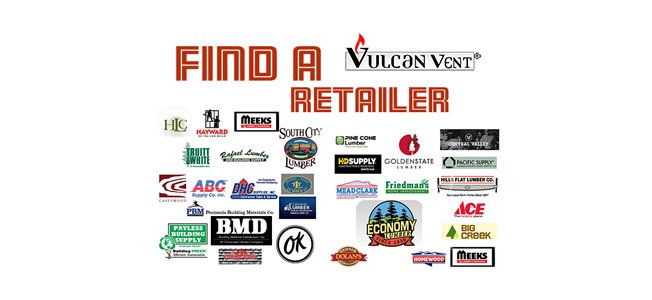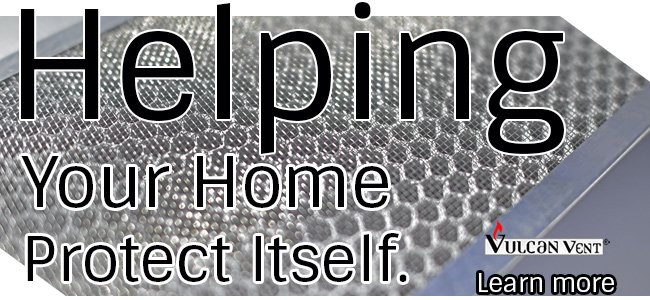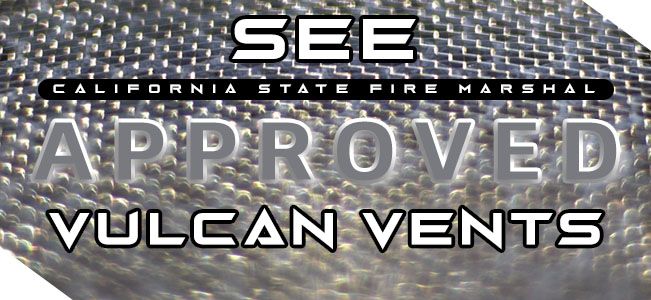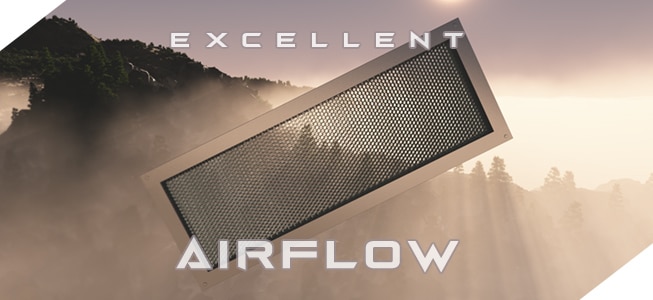In chapter 7A of the California Building Code, it is now required by law that new homes constructed in the WUI (Wildland-Urban Interface) have ember and fire safe vents. These new guidelines are also mentioned in Chapter 49 of the California Fire Code.
The purpose of these new laws is to create measures for fire-safety in the areas of California that are most at risk for fire hazard. These areas occupy what is known as the WUI, or Wildland Urban Interface. The WUI consists of areas where man-made structures are adjacent to unoccupied natural areas (such as forests). Due to their proximity to a large amount of fuel—in the form of wood and other flammable substances—they are at a high risk for wildfires. WUIs have been the fastest growing form of land use in the United States for many years now. For more information, check out this previous article.
Chapter 7A of the California Building Code specifies a number of different requirements for new homes constructed in these fire hazard areas. These requirements apply to roofing, eaves, shakes, shingles, vents, and more. The materials used for the home’s exterior walls, decking, and windows are also covered.
These requirements do not apply to accessory building or miscellaneous structures more than 50 feet from the home, unless otherwise specified by the enforcing agency.
Concerning vents, the California Building Code Section 706.A1 says the following:
“Where provided, ventilation openings for enclosed attics, enclosed eave soffit spaces, enclosed rafter spaces formed where ceilings are applied directly to the underside of roof rafters, and underfloor ventilation shall be in accordance with Section 1203 and Sections 706A.1 through 706A.3 to resist building ignition from the intrusion of burning embers and flame through the ventilation openings.”
The requirements listed in these sections (1203 and 706A.1 through 706A.3) include an Ember Intrusion Test and a Flame Intrusion Test. During these tests, pieces of cotton are placed behind the vent while the vent is exposed to either flame or embers, depending on the test. It is required that the cotton not ignite as the vent is exposed to either fire or embers, and that the temperature behind the vent not exceed 662 degrees Fahrenheit. Also, vents are required to be made of noncombustible materials (unless “located under the roof covering, along the ridge of roofs, with the exposed surface of the vent covered by noncombustible wire mesh”) and meet certain size specifications. Vents are required to be corrosion resistant.
The Vulcan Vent has passed the ASTM E2886 Standard Test Method for Evaluating the Ability of Exterior Vents to Resist the Entry of Embers and Direct Flame Impingement, thus meeting the vent requirements outlined in the California Building Code chapter 7A. The Vulcan Vent has been approved by the California State Fire Marshal.
There are separate testing procedures for the different areas of the home affected by Chapter 7A of the California Building Code, but all are directed towards determining if the material is fire and ember resistant. Chapter 7A is in place to legally force new homes constructed in the WUI (Wildland-urban interface) to be constructed with materials that will resist burning in the case of a fire hazard.
In order for a home to be fire safe, it is crucial that the vents block embers. Research has shown that the majority of homes that burn due to wildfires are ignited by airborne embers, which can travel for miles before entering a home through its vents or other access points. More often than not, it is embers—not actual flames—that burn down houses.
Wildfires are a major threat to many areas of California. Contractors, architects, homeowners, and enforcing agencies all need to be aware of the new laws. The Vulcan Vent is approved by the California State Fire Marshal for installation in accordance with the building code, as it has proven during testing to resist flames and embers for prolonged periods. For details on the testing requirements and other guidelines for different parts of a home—such as eaves, windows, gables, walls, roofing, and more—refer to chapter 7A of the California Building Code.
Image credit: “20170617-FS-DNF NF-EE-Brianhead Wildfire Day 1-IMG_0861” by Intermountain Region US Forest Service is licensed under CC PDM 1.0





Thanks for giving me a most Essential Knowledge of Residential House Building in USA,State of California.